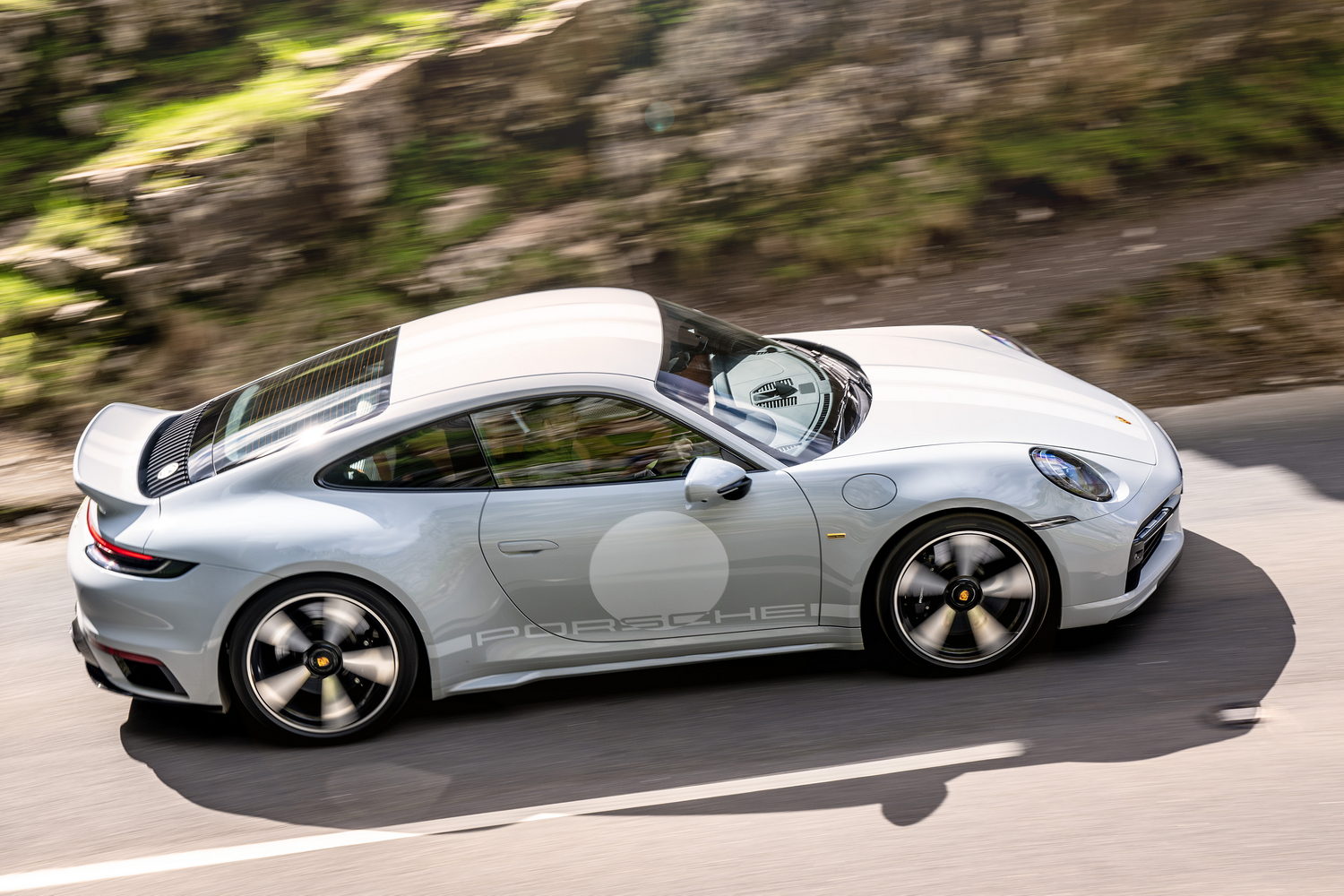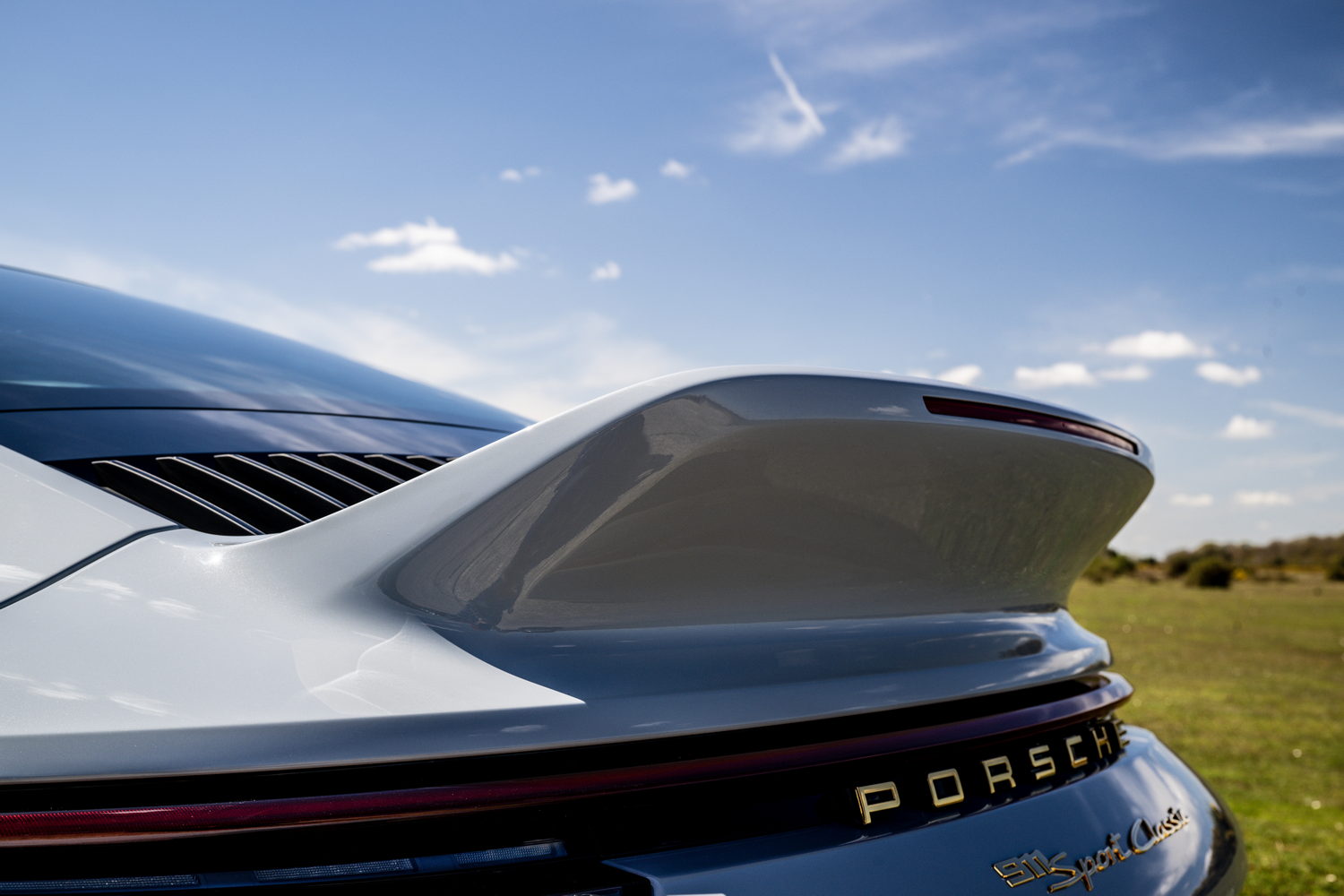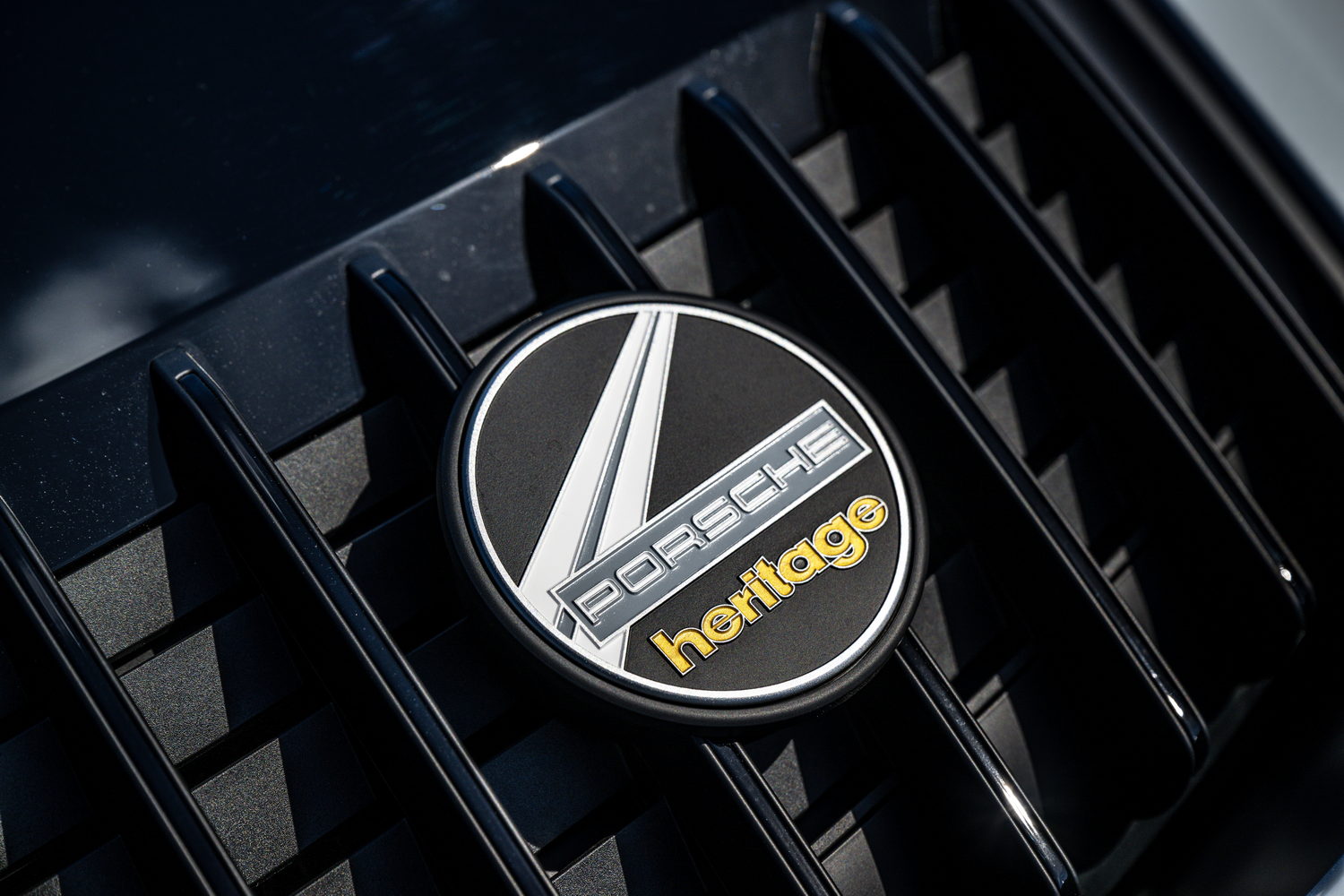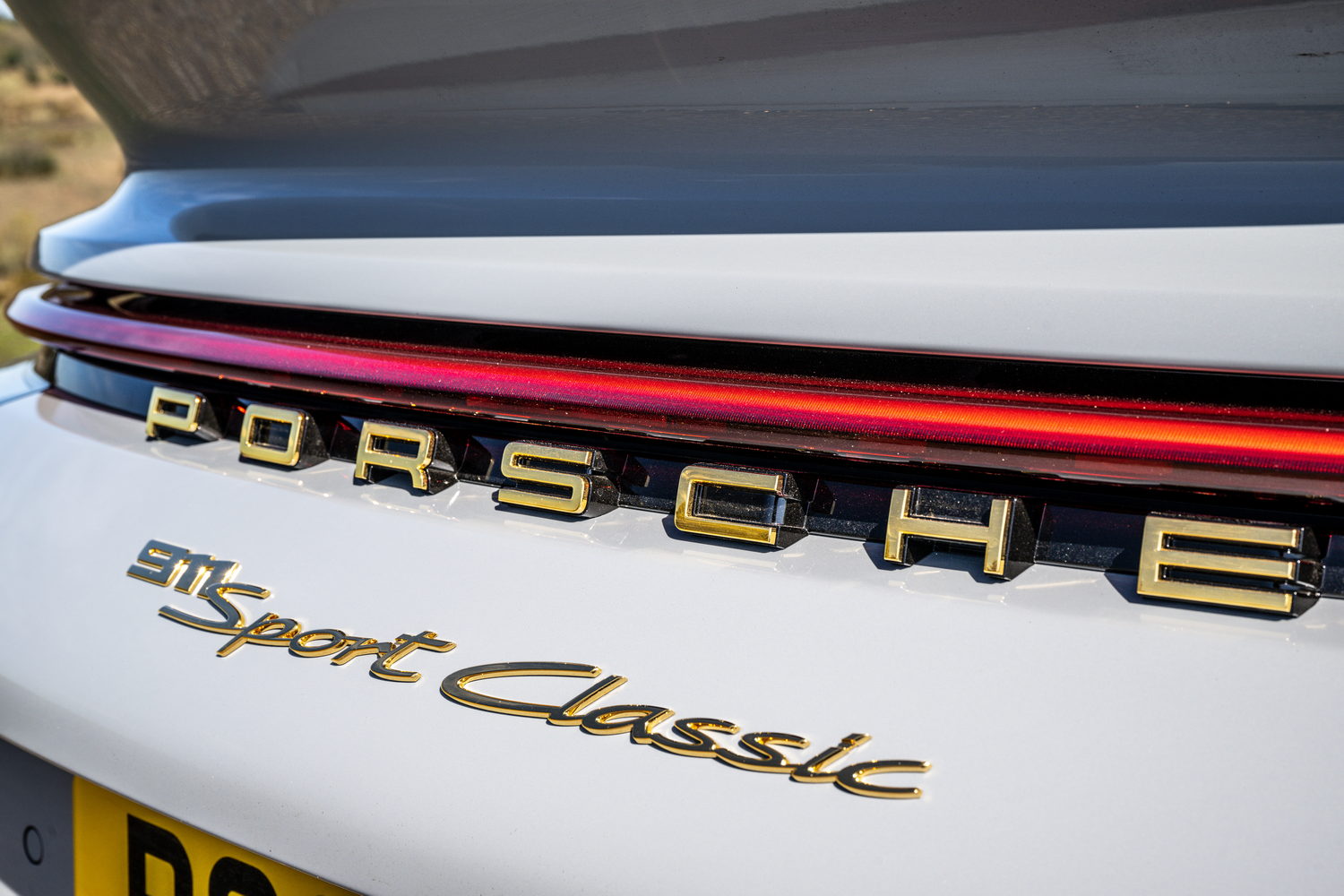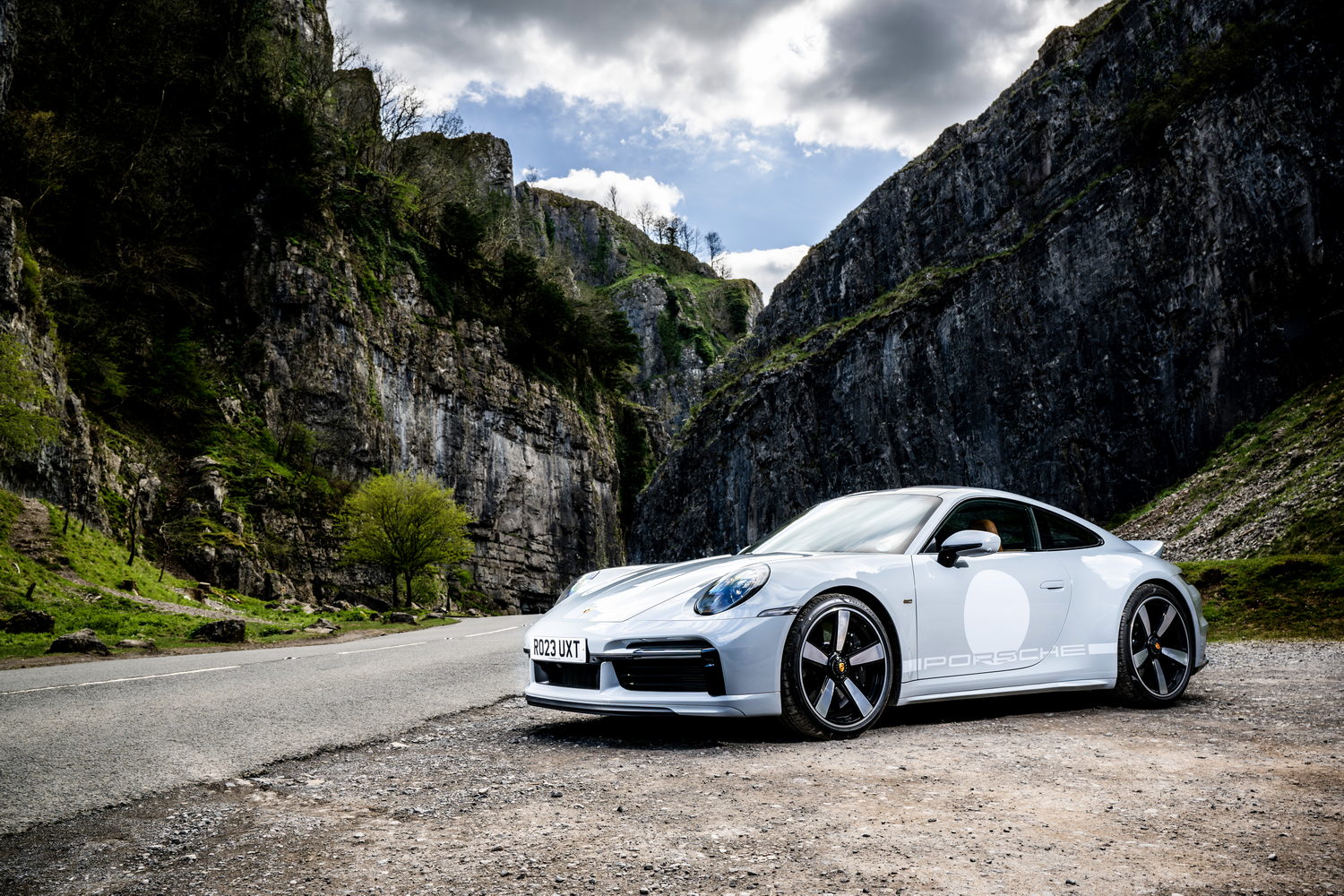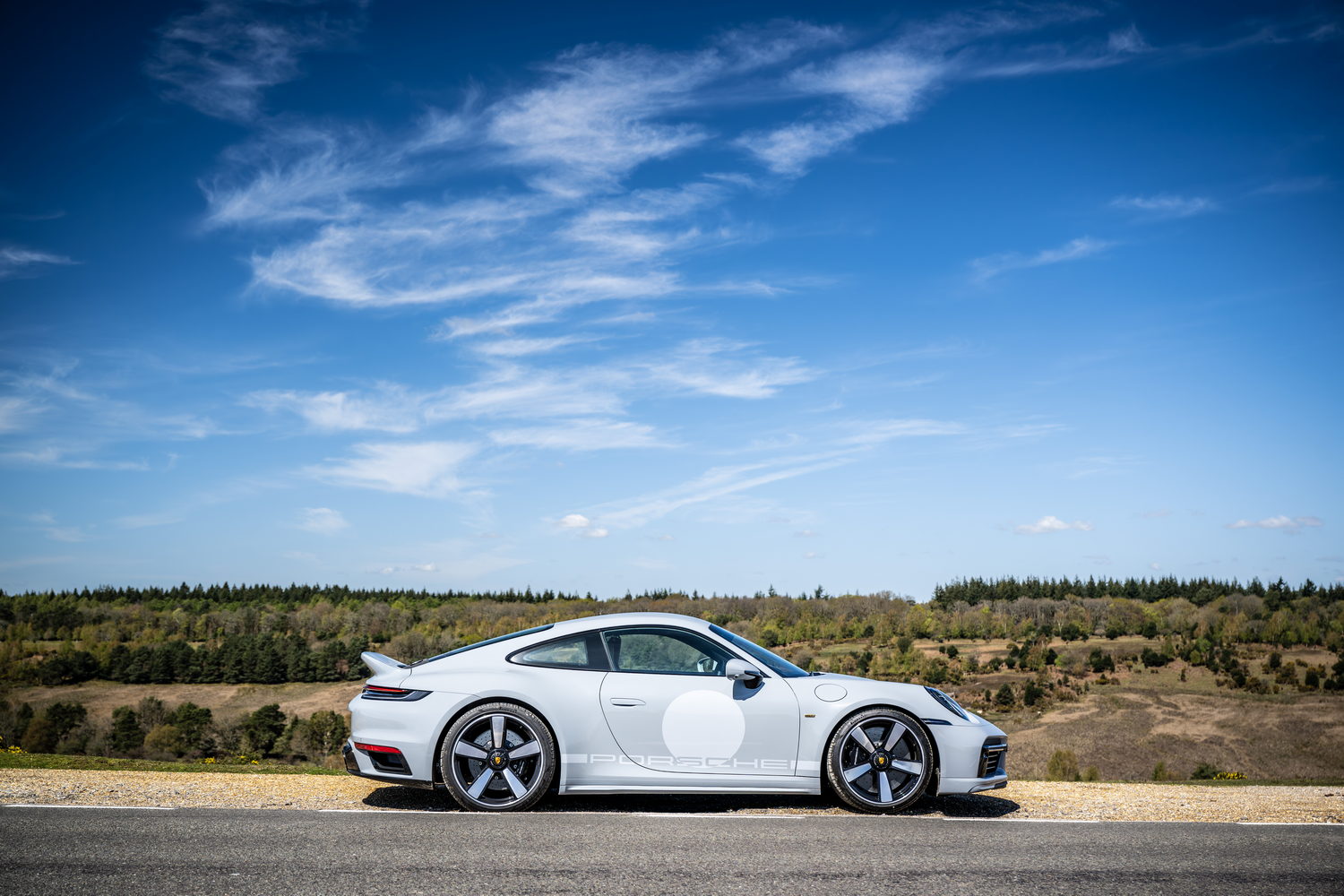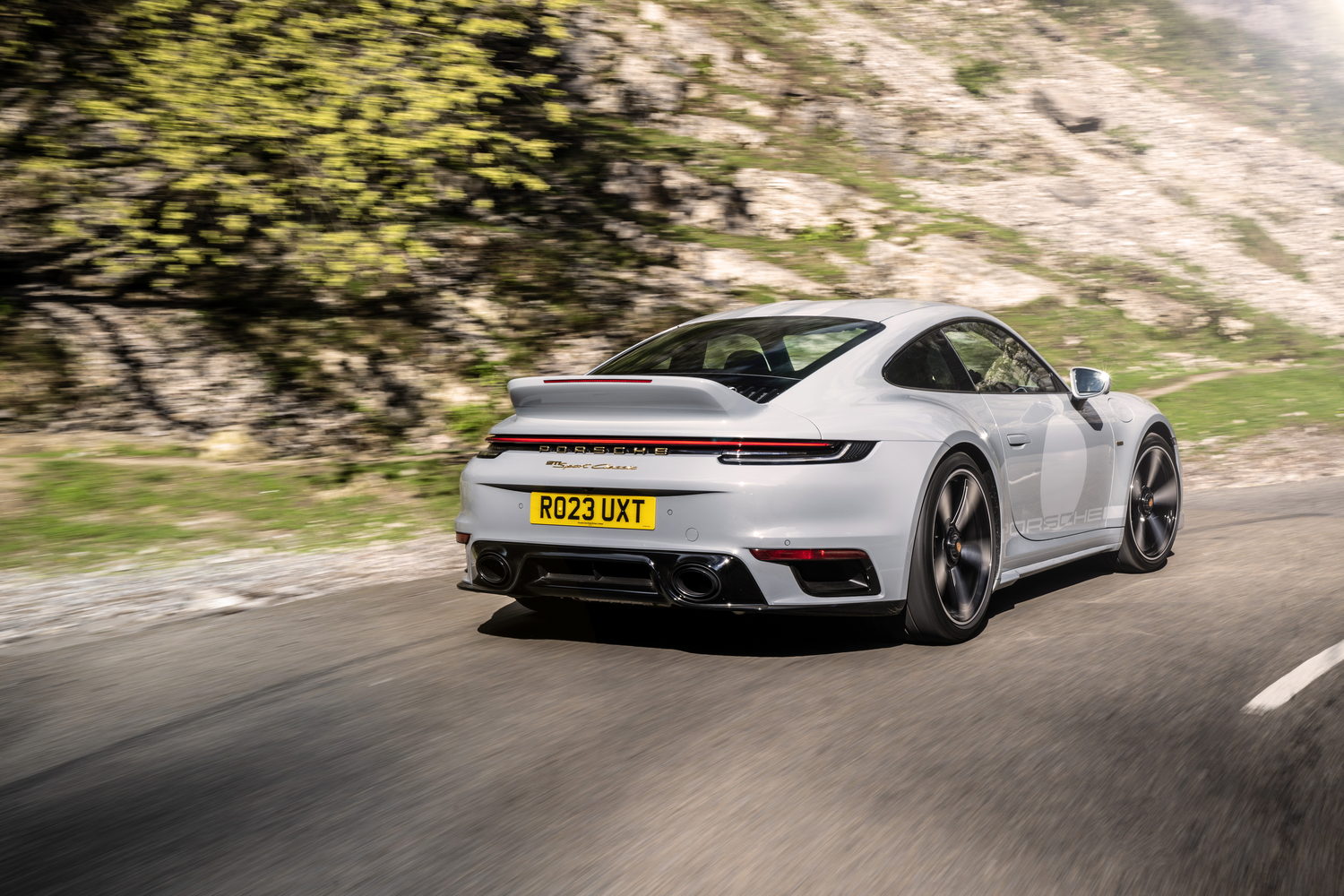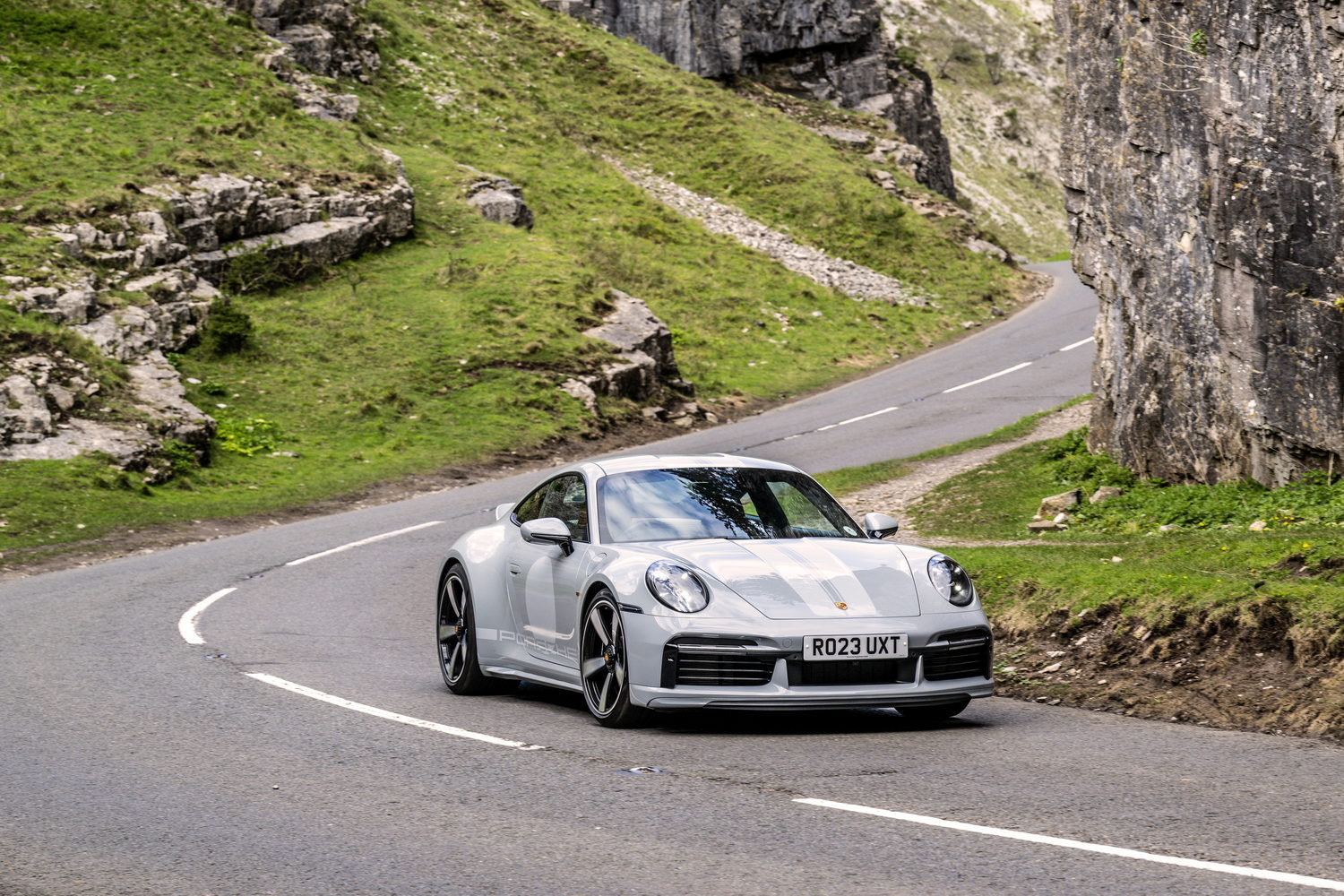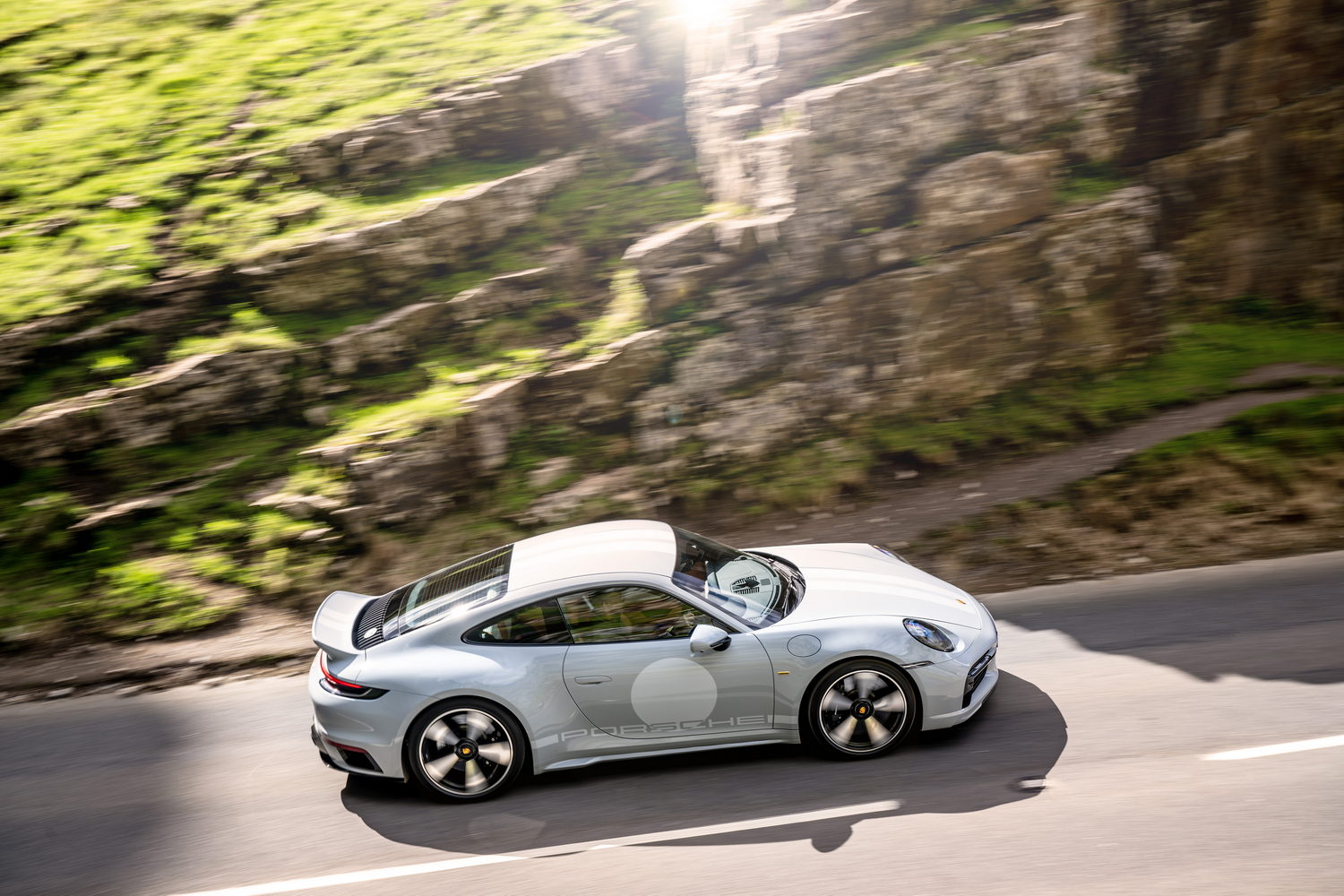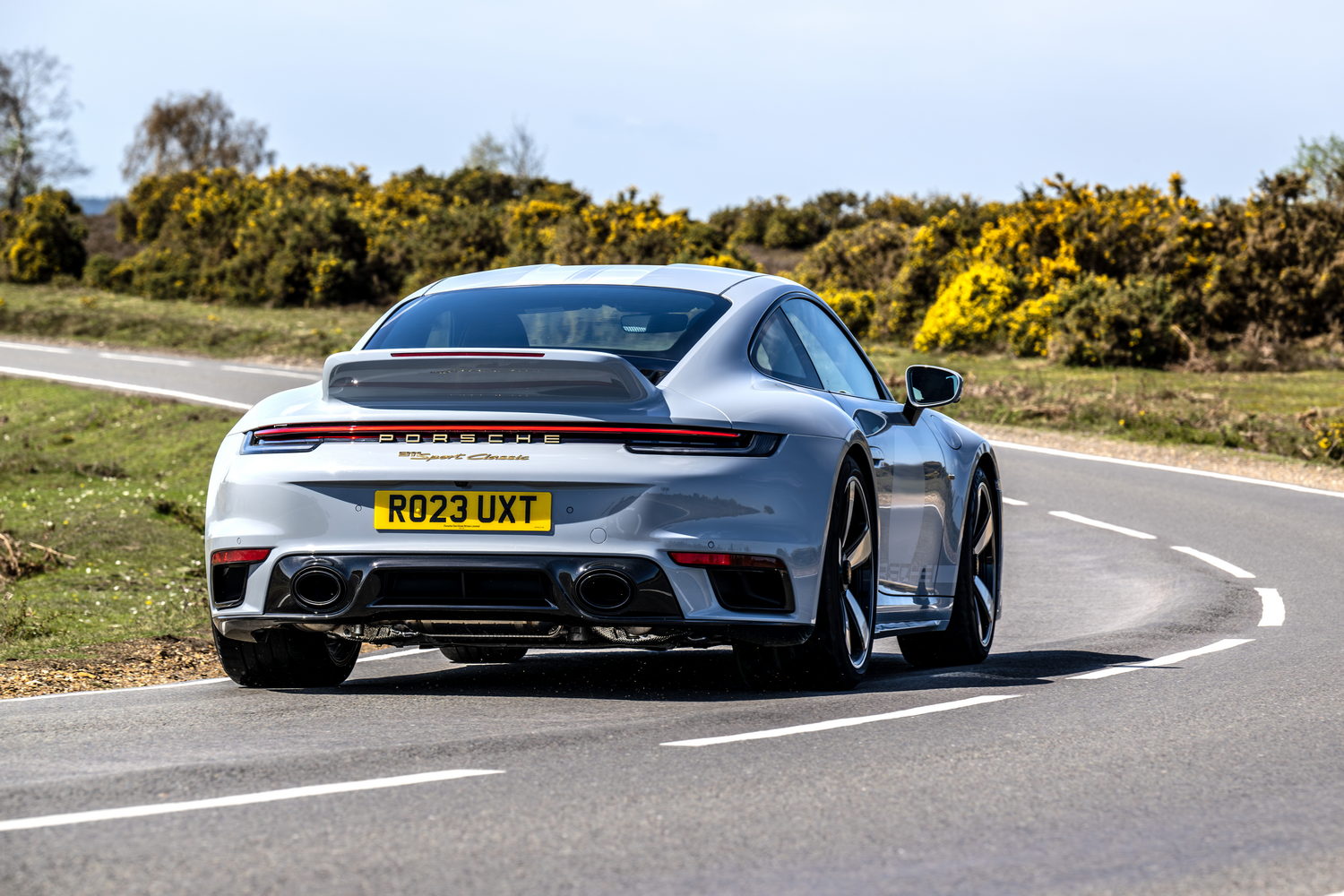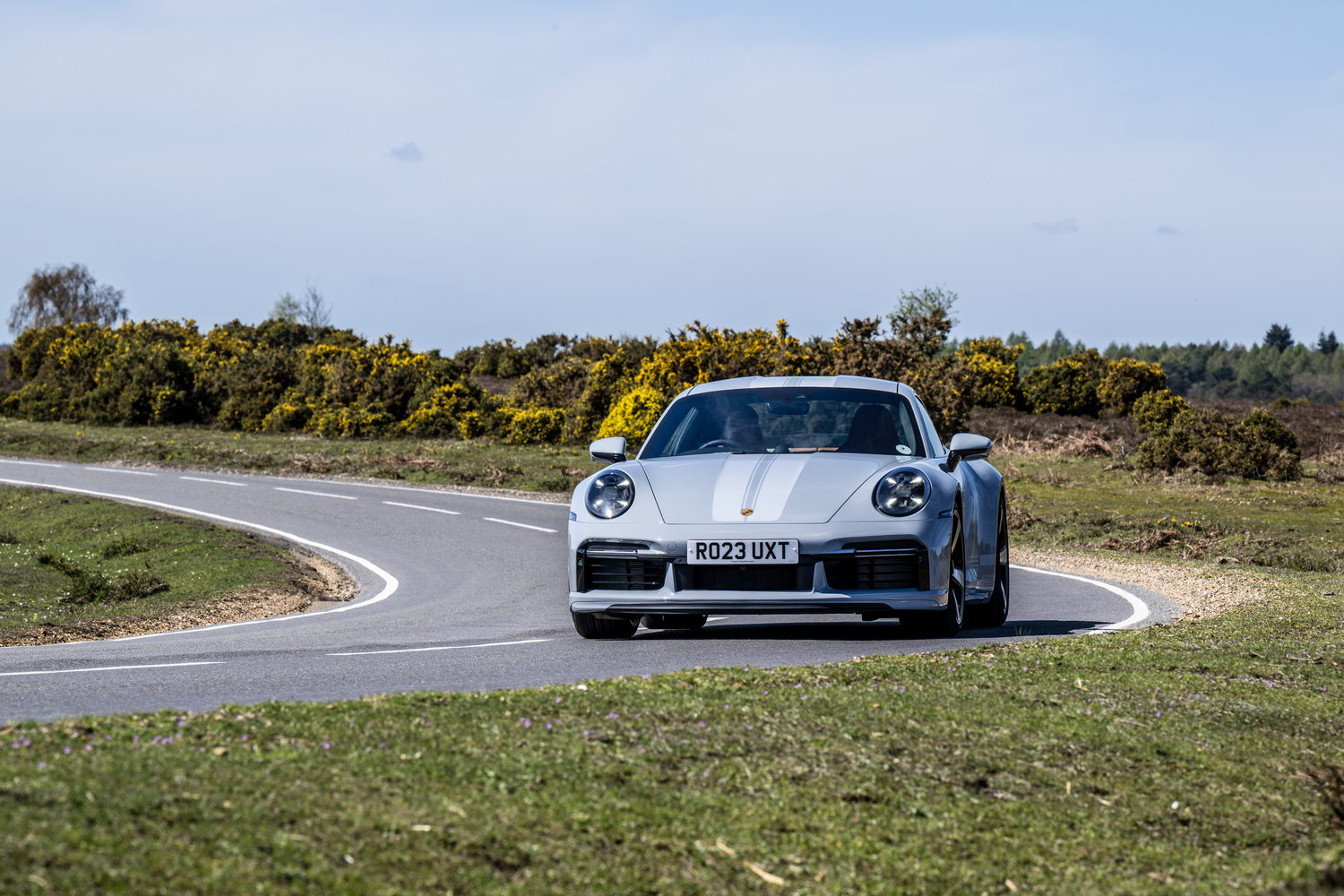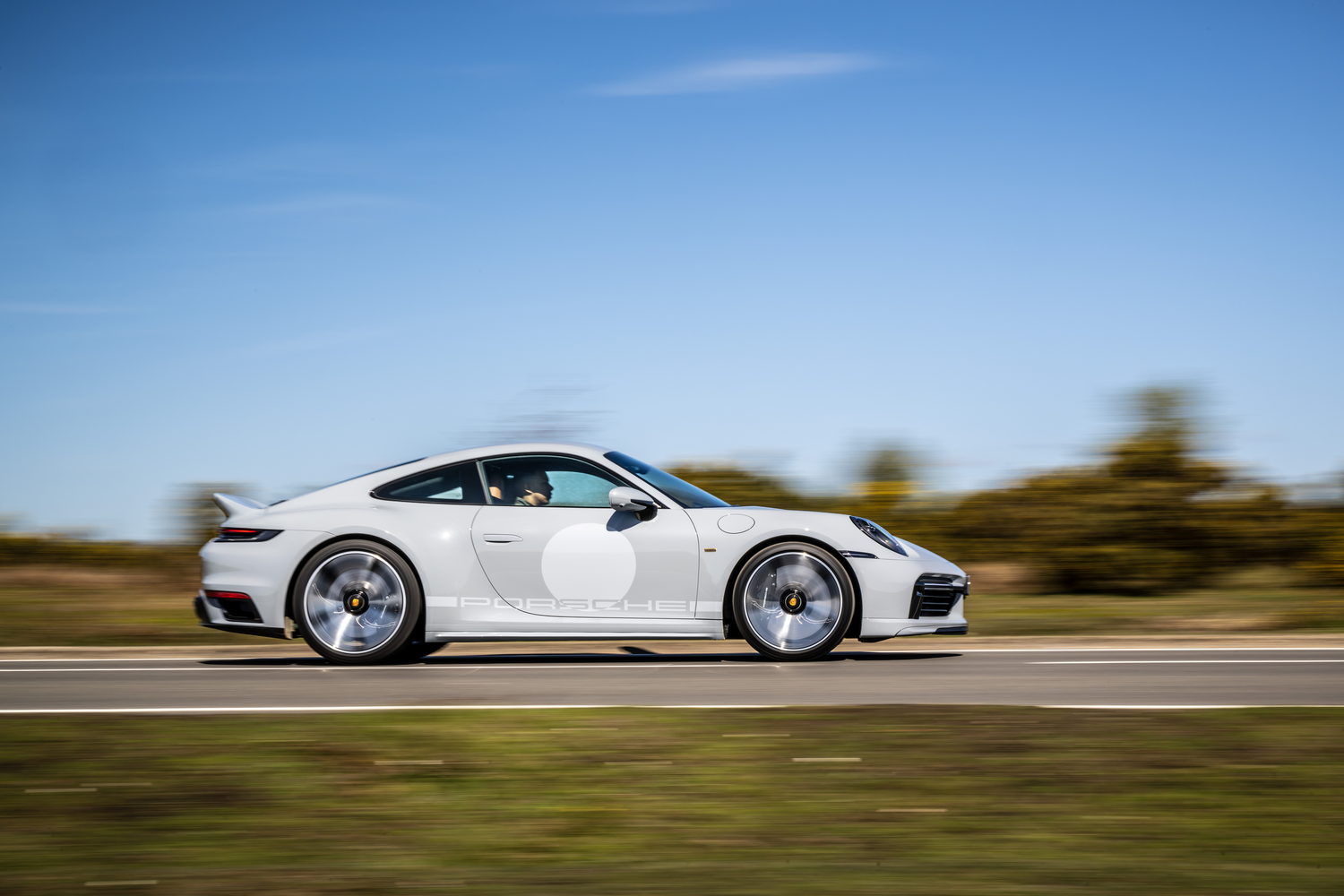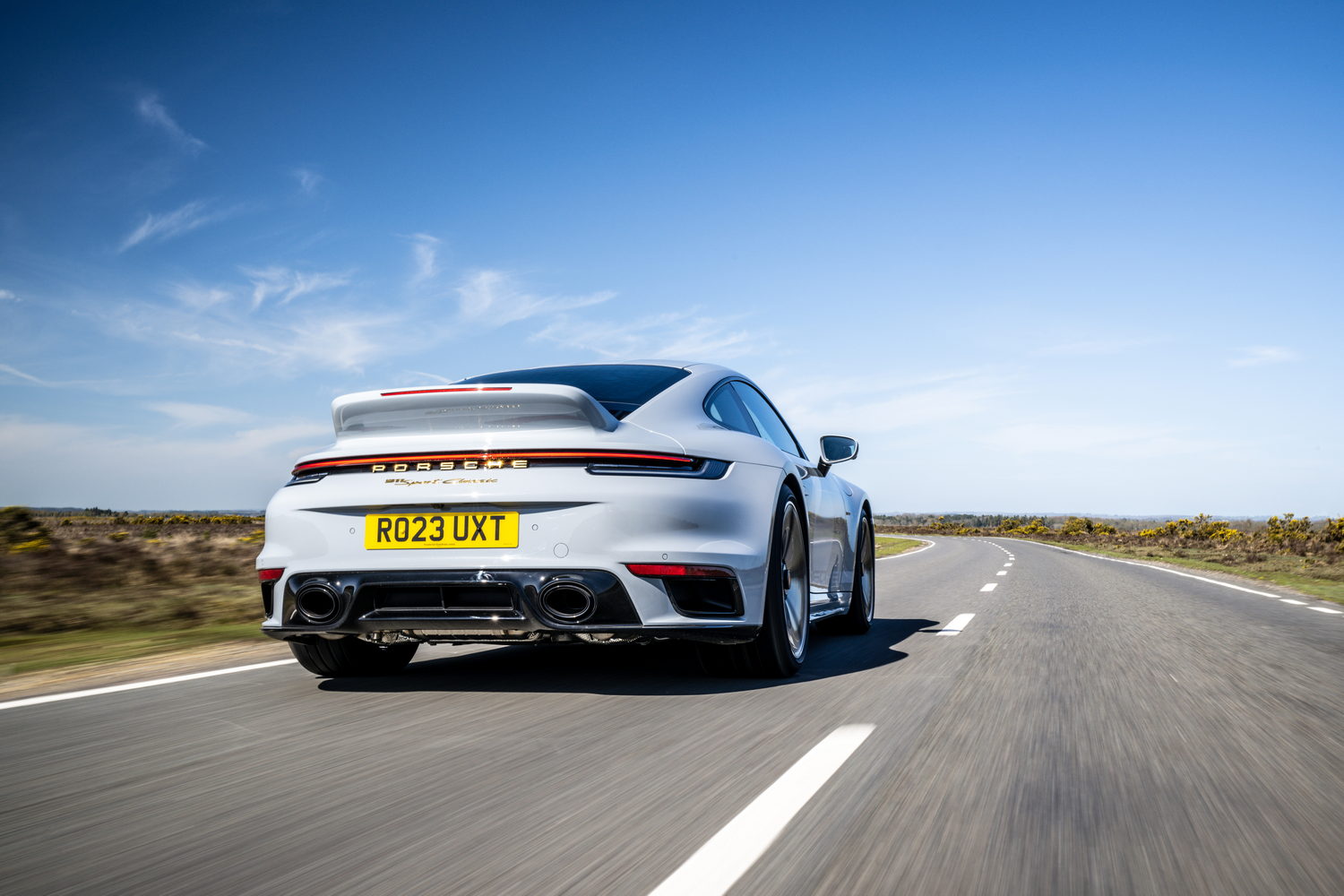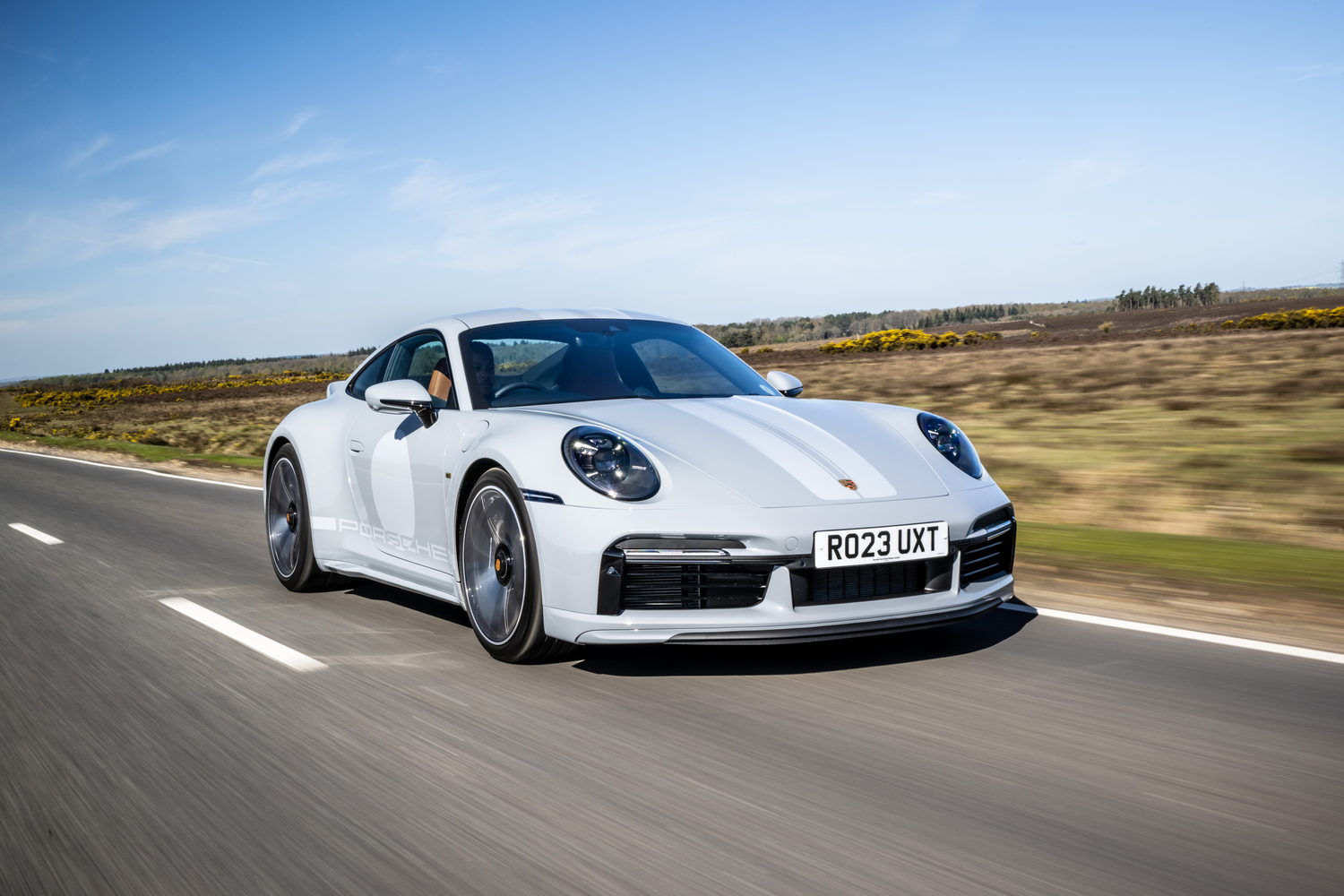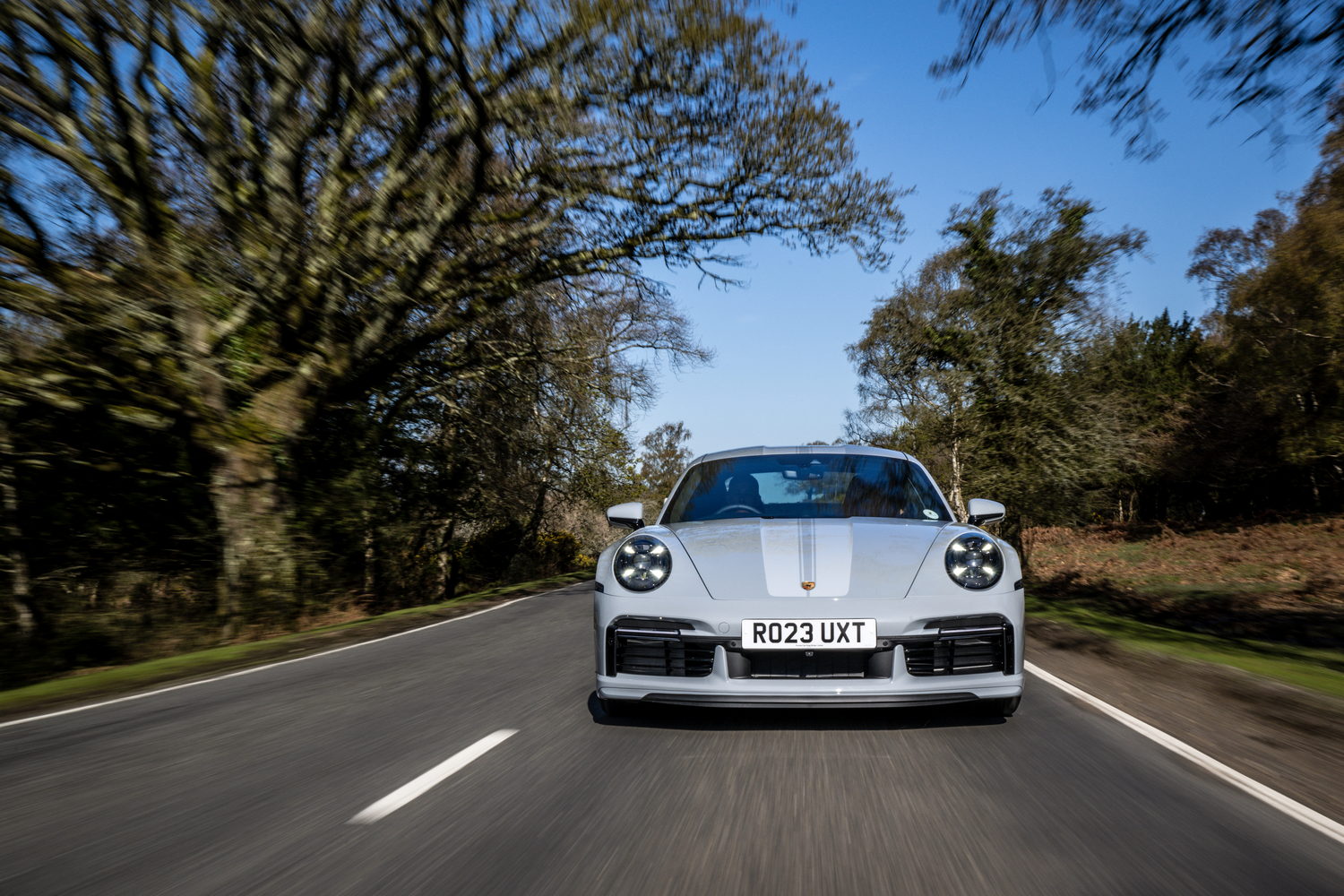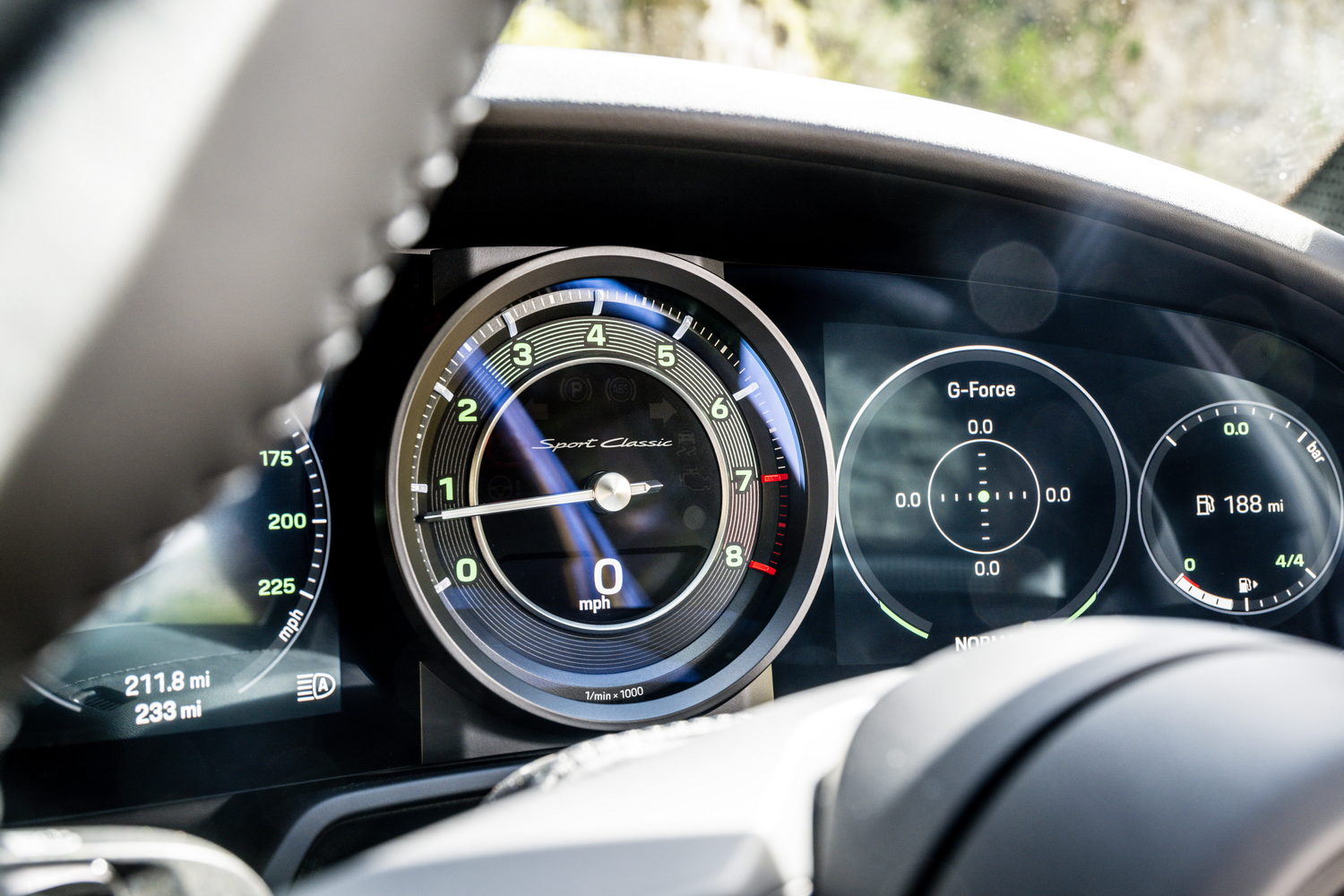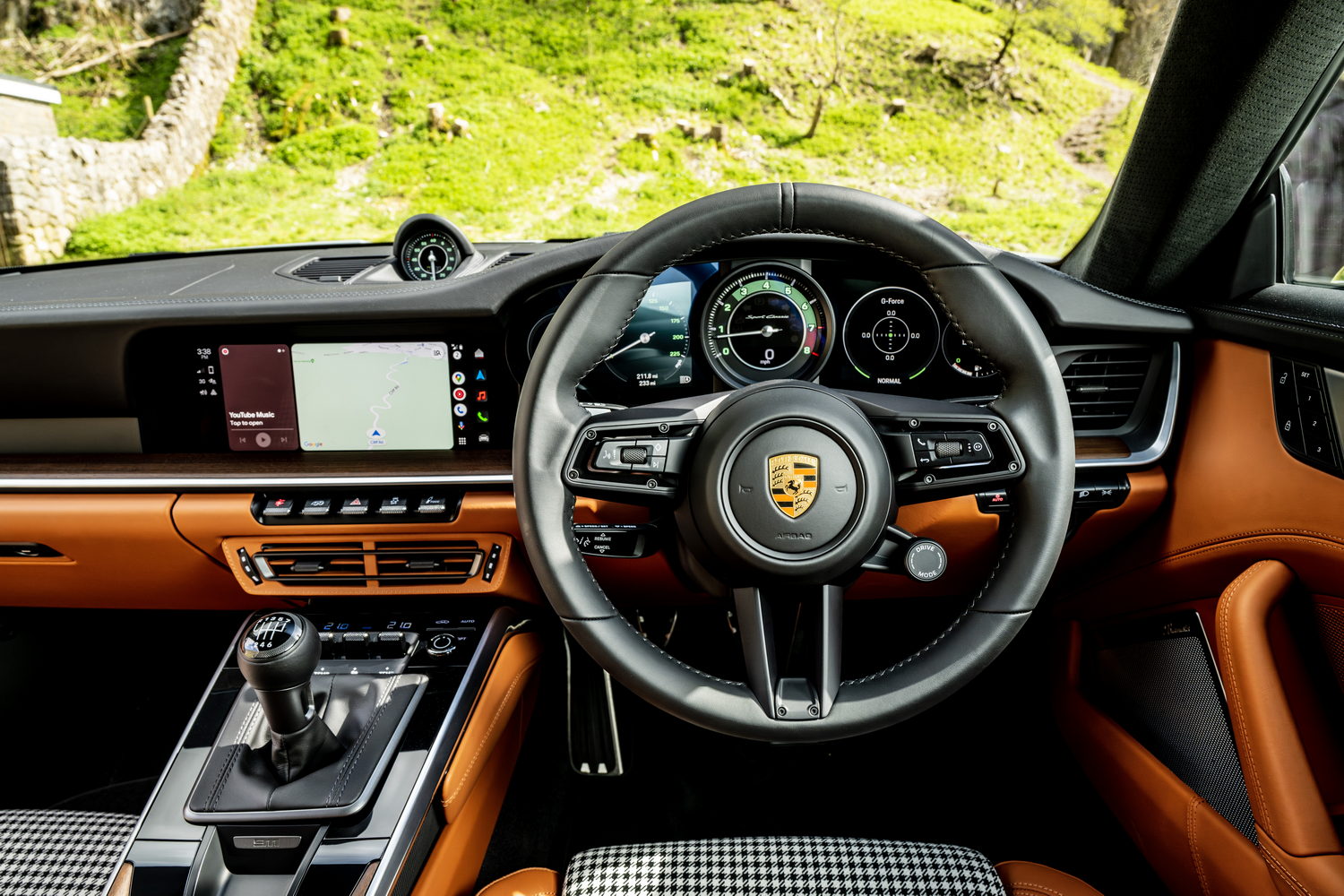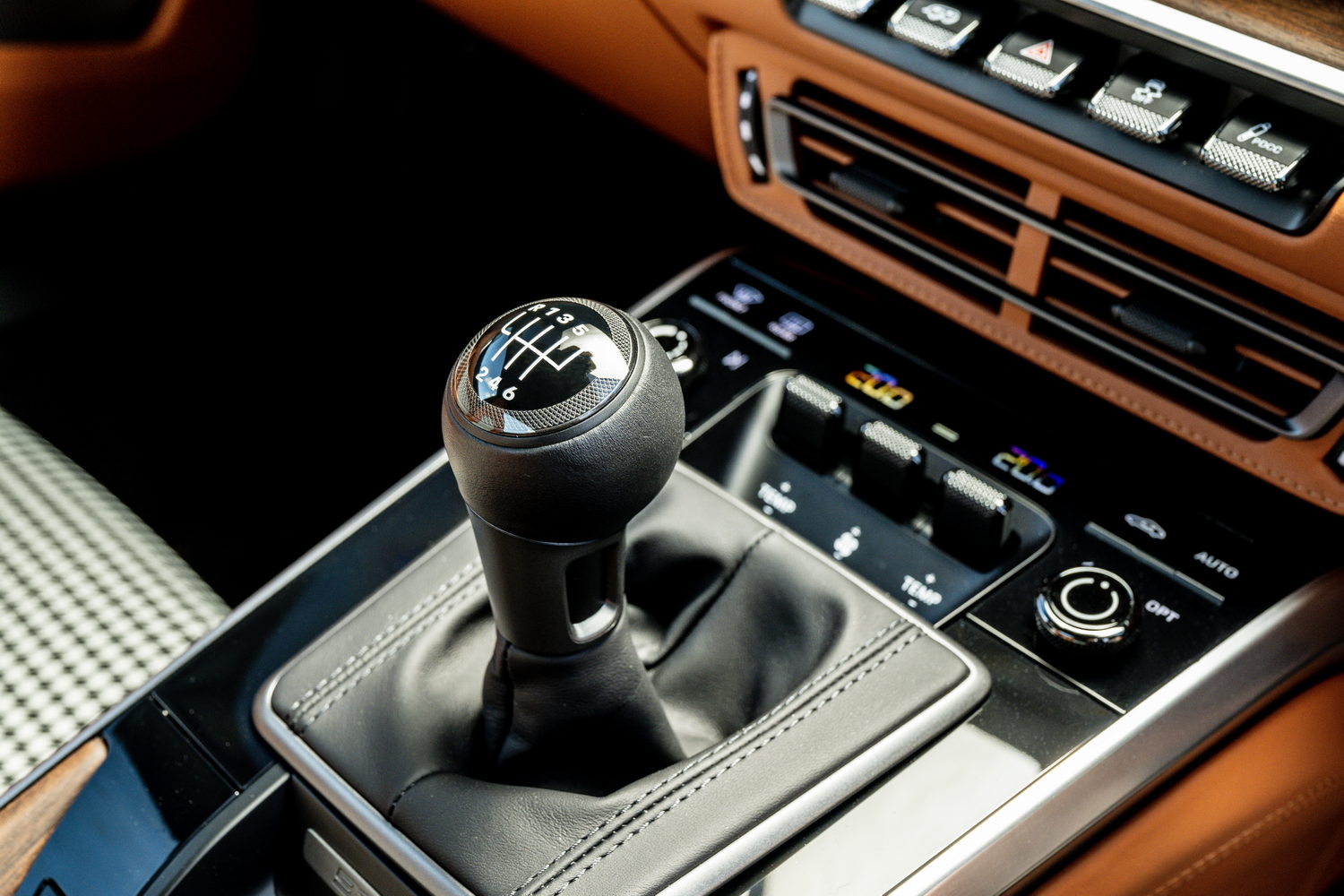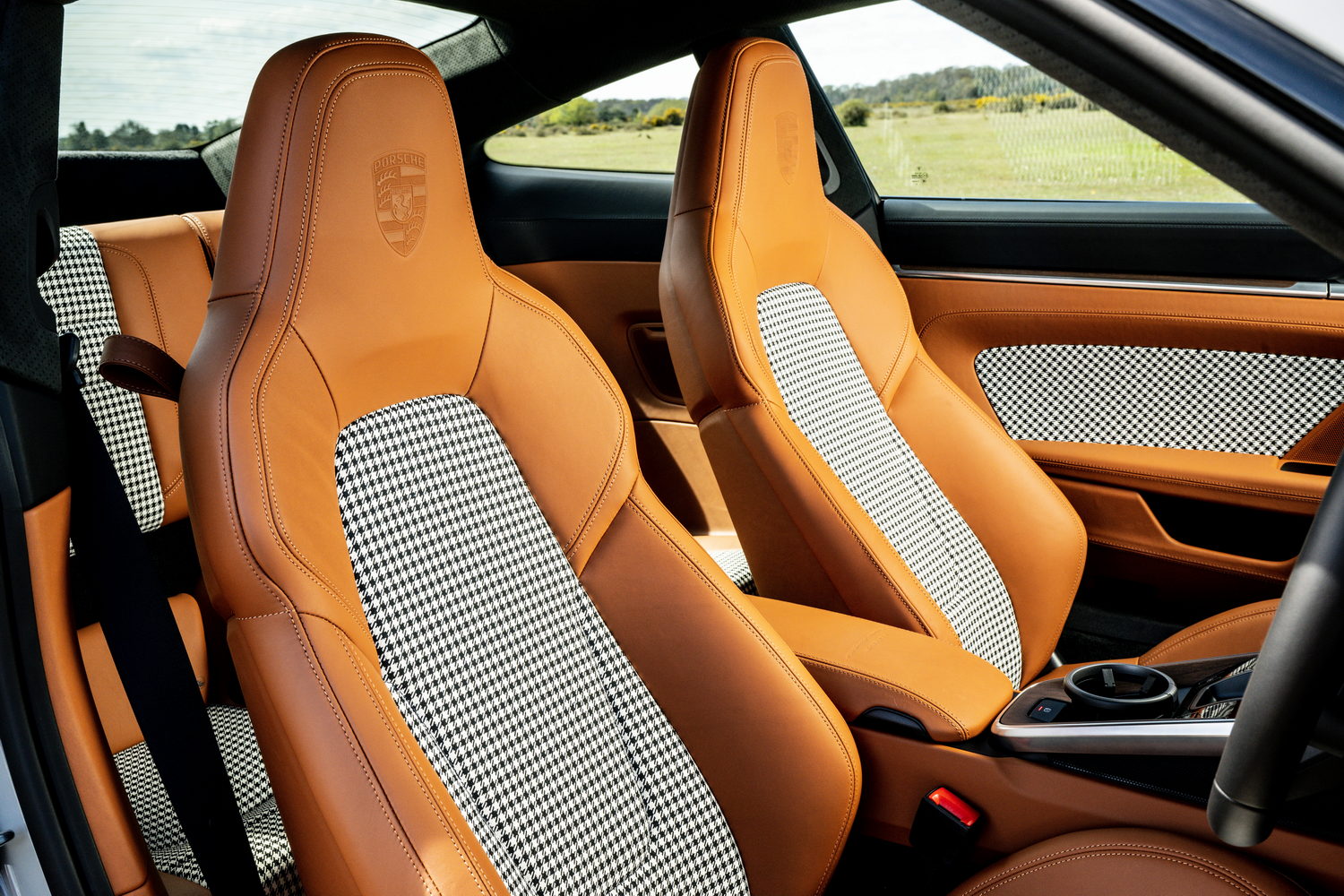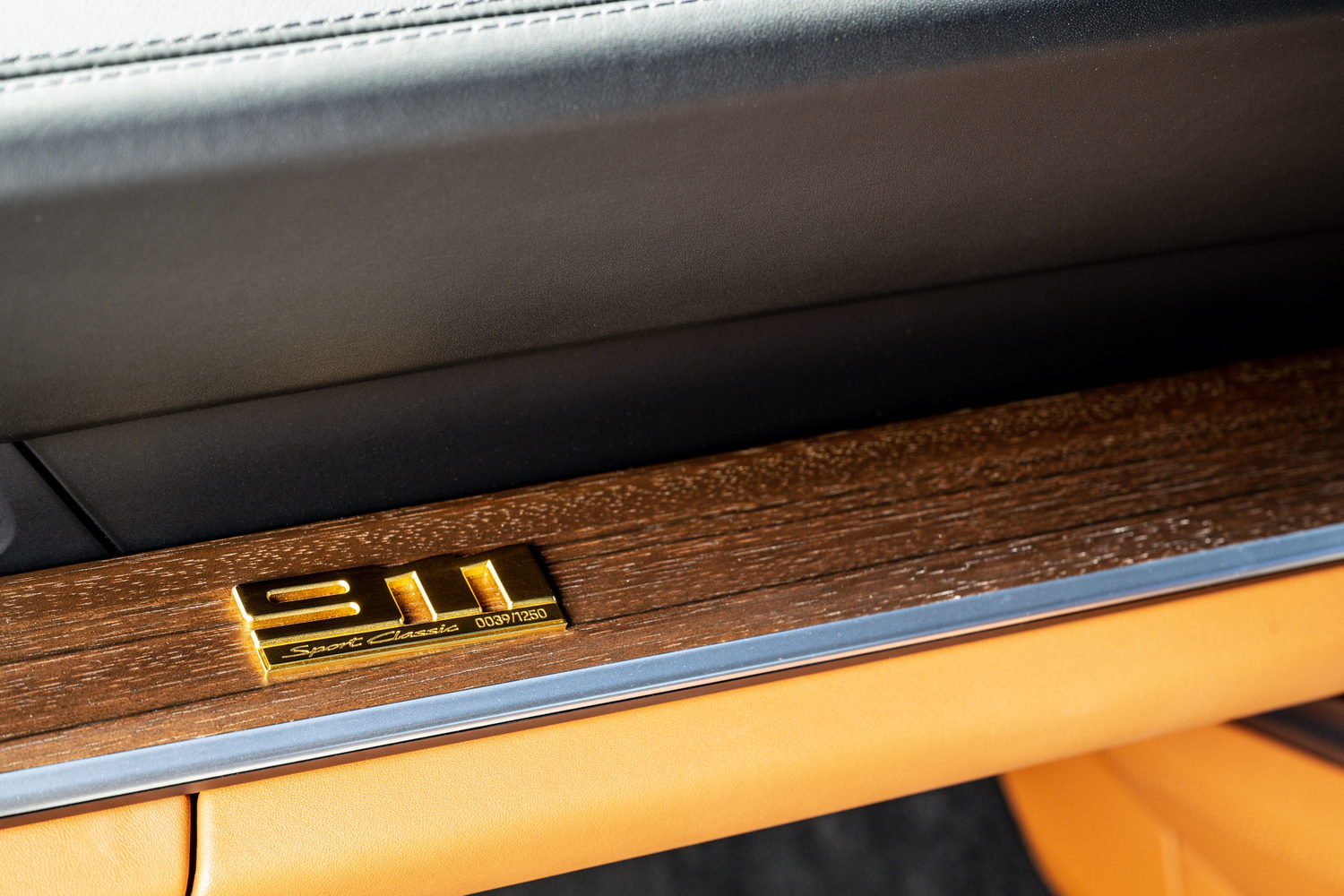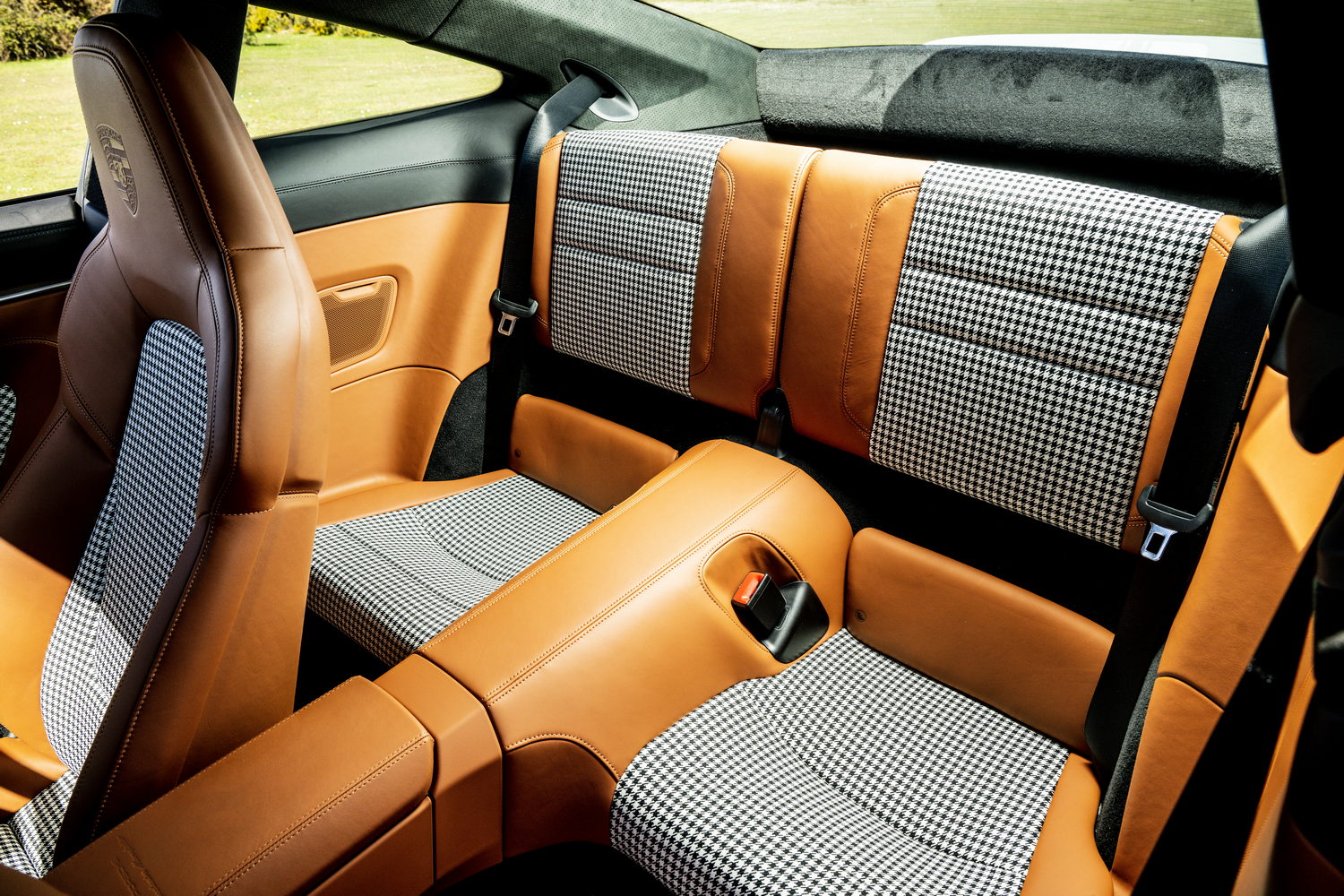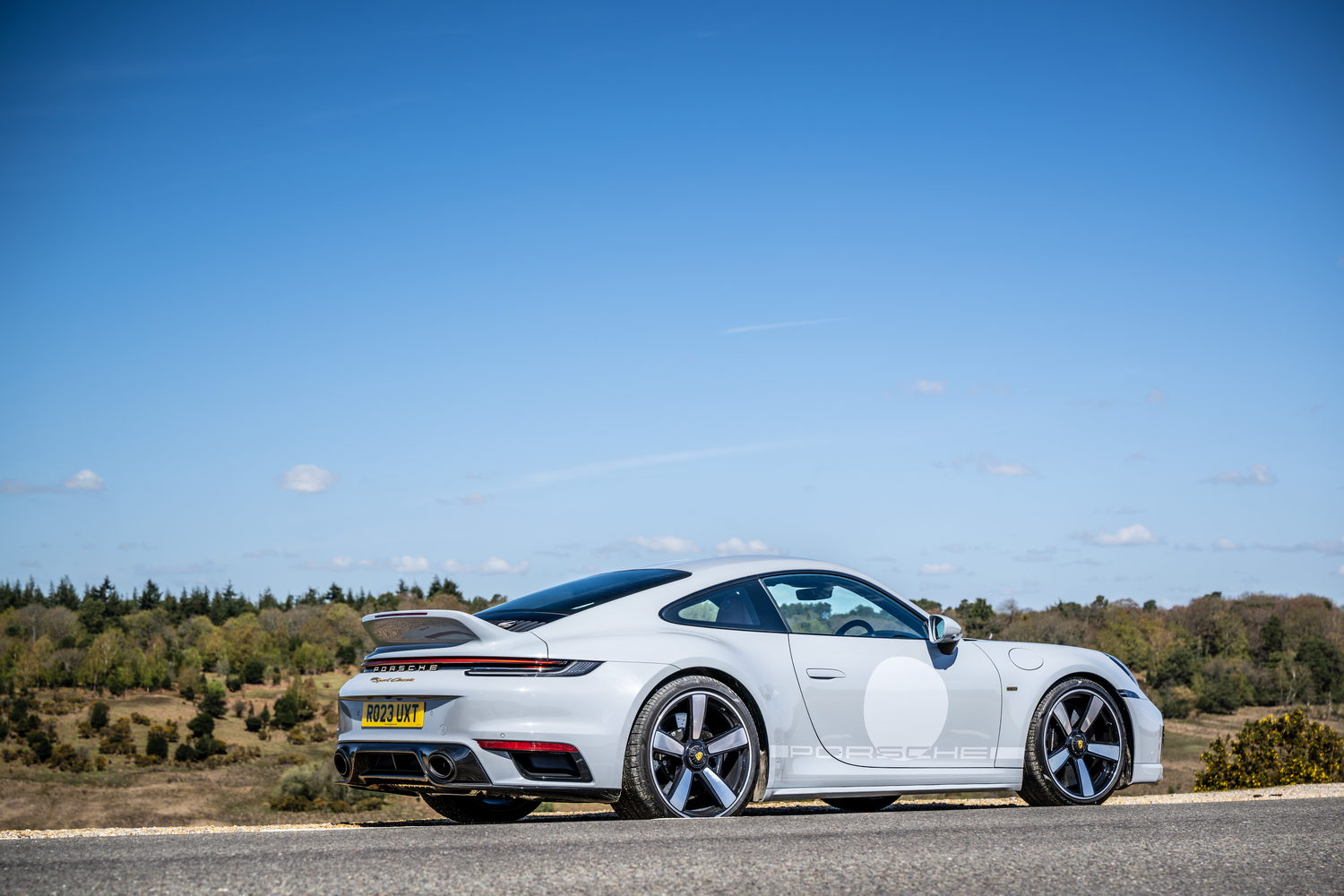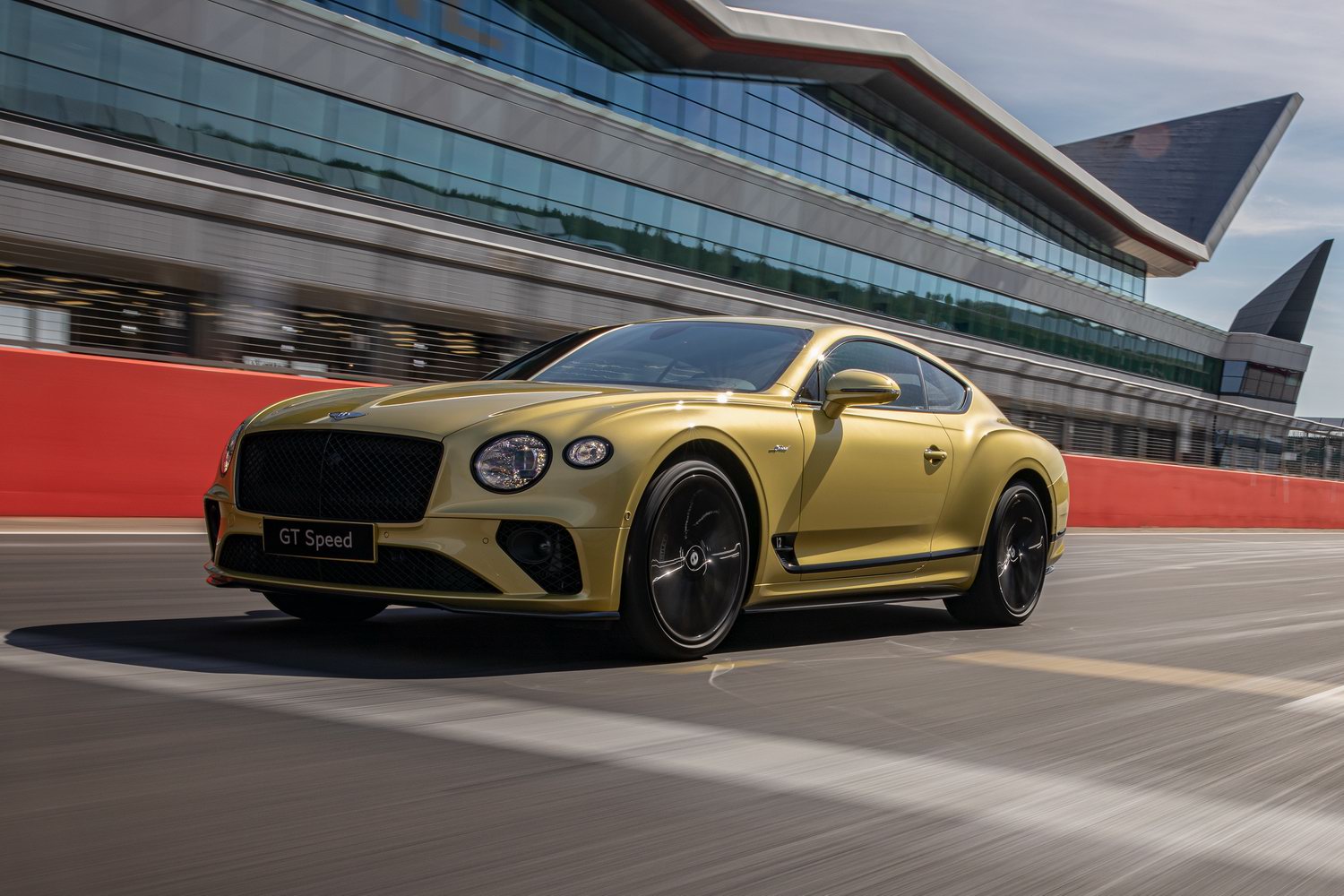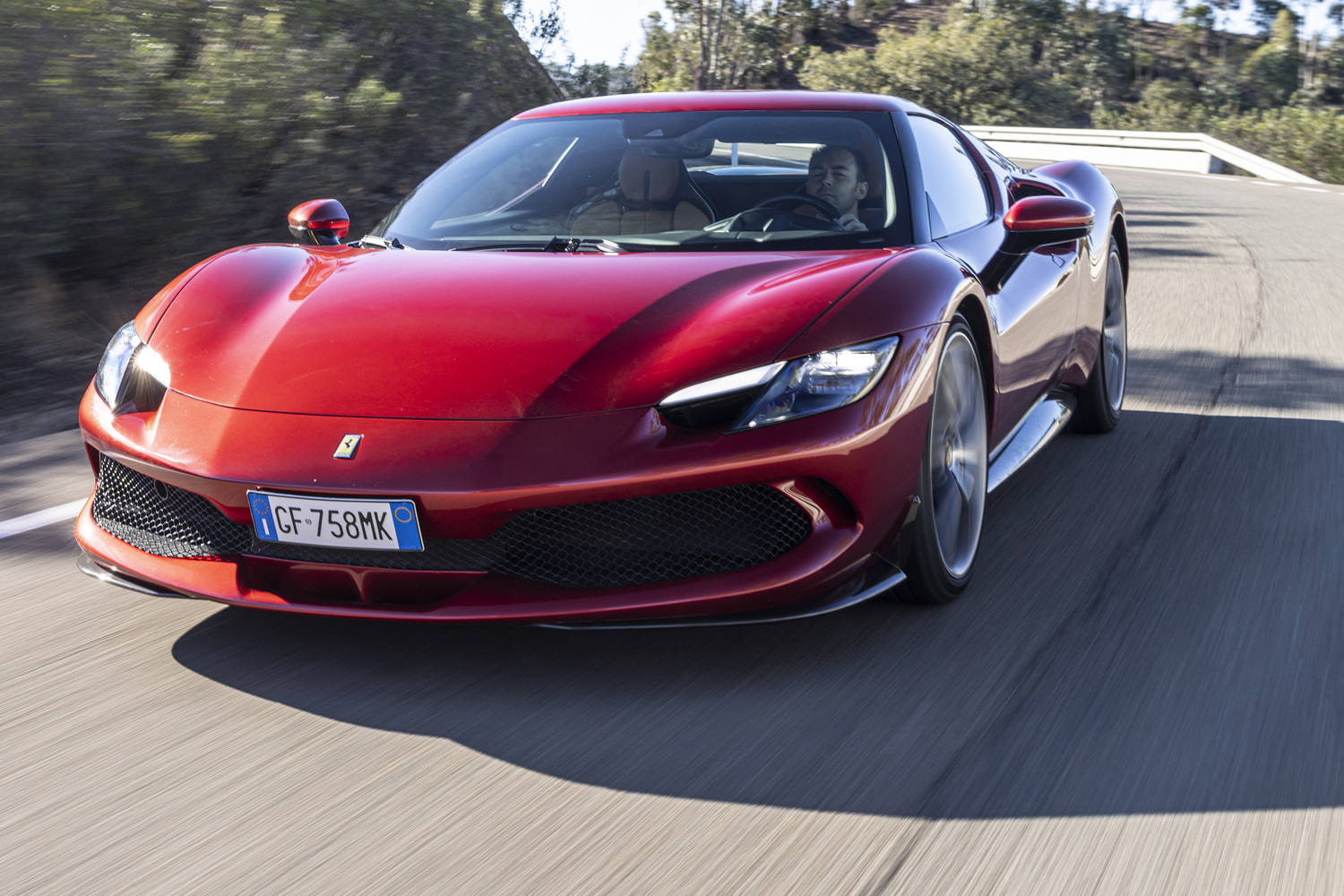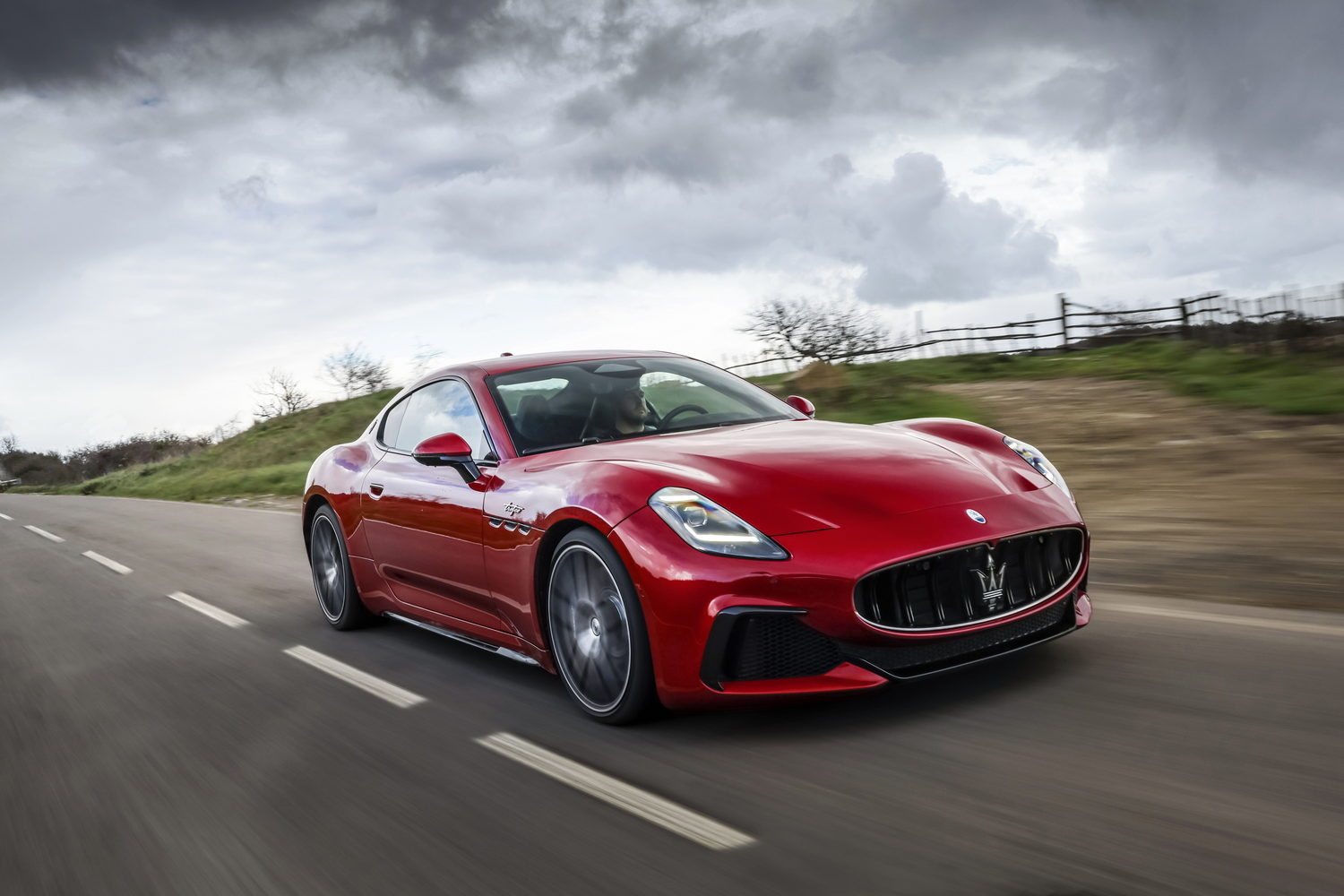We're kind of used to the idea of retro-styled modern cars, now. From the MINI Hatch to the Volkswagen ID. Buzz and from the now-defunct 'new' Beetle to the Fiat 500, the idea of manufacturers producing a modern take on former glories is nothing new. Yet Porsche has done it anyway, creating a new, limited-edition that pays homage to the original 911 of the 1960s and the famous 2.7 RS model - celebrating its 50th birthday last year. We went for a spin to find out whether the exclusive new Sport Classic is all the 911 purists will be hoping for.
In the metal
With 60 years of heritage now behind it, you might expect choosing a Porsche 911 to honour would be hard work. Yet somehow, the 2.7 RS was always going to win out, with its ducktail spoiler and that Carrera lettering across the door sills. And so the new Sport Classic has applied some of that styling attitude to the modern '992'-generation 911.
In essence, Porsche has taken the 992 'widebody' design, usually reserved for the Turbo models, and added a fixed spoiler reminiscent of the old ducktail and wheels that look a little bit like the classic Fuchs alloys fitted to 911s of old. There's a hint of a double-bubble roof, too, and really eagle-eyed readers will notice there are no intakes behind the doors, as you'd find on a Turbo, setting the Sport Classic further apart from its siblings.
There's fresh Sport Grey Metallic paint, too, which is inspired by the Fashion Grey paint available on the old Porsche 356. However, customers can also choose from a range of other paint schemes, including solid Black, Agate Grey Metallic and Gentian Blue Metallic. Or you can have any colour you wish through Porsche's paint-to-sample programme. Visual tweaks to the Sport Classic don't end there, either. Grey stripes on the bonnet and roof, as well as down the sides of the car, are aligned with the contours of the body, and pay tribute to the old 2.7 RS.
Then there are the details, including the gold Sport Classic lettering at the rear, the Porsche Exclusive Manufaktur logos on the wings and the old-school Porsche crest on the nose. And you get a cool Porsche Heritage logo on the grille by the spoiler, not to mention the option of applying a number to the doors. They're small touches, but they give the car a heap of added appeal.
Inside, too, the Sport Classic has been given something of a retro makeover. Most notably, there's the three-tone upholstery that combines Black Nappa leather and Cognac semi-aniline leather with the classic Pepita cloth. Somewhere between a chequered flag pattern and houndstooth, the pattern was first used in the original 356, but it was only officially marketed for the first-generation 911.
Now, the cloth is used in the centre panels of the seats and in the door inlays to great effect, giving the 911 a classic look without making it feel old at any point. It's quite the achievement, despite the inclusion of wood trim and yet more gold lettering, including the plaque number on the dash. Although it should look old-fashioned, it really doesn't.
Perhaps that's because the 911's cabin is now so thoroughly modern. Like any other 911 currently on sale, the Sport Classic gets a big touchscreen infotainment system with sharp and intuitive software, as well as a clear display. There's climate control and other mod-cons, too, and you get a hybrid instrument cluster that combines an analogue rev counter with configurable digital displays. Some of them are a bit difficult to see thanks to the steering wheel, but they're there all the same.
Yet despite all this modernity, the Sport Classic still offers plenty of neat retro features. There's a black perforated leather roof lining, for example, and the standard 911's rev counter is replaced with a more traditionally styled one. The backlighting is even green to reflect the original car's luminous dials.
Unfortunately however, despite all the work Porsche has done in the Sport Classic's cabin, it's still less practical than we'd like. Adults don't really fit in the rear seats so though you might get kids in there now and then, it isn't what you'd call ideal. Then there's the traditional Porsche 'frunk' with just 132 litres of space. That's about the same space you get in the notoriously cramped Mazda MX-5. Unlike the MX-5, though, you can use the otherwise redundant rear seats as a big parcel shelf, accommodating some extra luggage. There's enough space for two to take a week-long road trip, but that's about your lot. Of course, this applies to all 911s and not just the Sport Classic.
Driving it
In essence, the Sport Classic is a bit like a 911 Turbo, albeit with a few noticeable and quite significant tweaks. First of all, it's rear-wheel drive, as opposed to the all-wheel-drive Turbo, and it comes with a seven-speed manual gearbox, rather than the Turbo's eight-speed double-clutch automatic. These are all good things for the purists, who will doubtless be excited by the Sport Classic's promise of more driver involvement, but they make less rosy reading for those driven by data.
For a kick-off, the 3.7-litre twin-turbocharged flat-six petrol engine had to be detuned slightly to give the manual gearbox half a chance. That means where the Turbo kicks out 580hp, the Sport Classic gets 'only' 550hp. And because it's less powerful, slower to change gear and has less traction, the Sport Classic is a bit slower to accelerate. In fact, where the Turbo can get from 0-100km/h in 2.8 seconds, the Sport Classic takes 4.1.
And it would probably be even slower were it not for the fact Porsche has gone to great lengths to shave weight from the Sport Classic. Not only is the ducktail spoiler made from carbon fibre, but so too are the bonnet and the roof. The manual gearbox is lighter than the Turbo's automatic, as well, and losing the all-wheel-drive system has helped shed more kilos. The result is a car that weighs in at 1,570kg - 70kg less than the Turbo.
Not only does that mean the Sport Classic is still rapid in a straight line - the 315km/h top speed is just 5km/h down on the Turbo - but it's even better in the corners. The Turbo S is an incredible bit of kit, offering seemingly boundless levels of grip, but the Sport Classic just feels that little bit lighter and more agile.
Of course, the difference isn't night and day - the Sport Classic still doesn't have the alertness of the GT3 - but it's noticeably more eager to turn into corners and the lightened body follows the wheels immediately. As in the Turbo, the steering is magnificent, but the Sport Classic just feels that little bit more eager to obey.
The trade-off for that is a slightly more animated feel through the wheel and the seat of your chinos. Where a Turbo might feel so ludicrously planted that fast cornering is almost a non-event, the Sport Classic manages to add in a bit more spice. That's partly down to the firm suspension, which is a bit too stiff for road use when you select its sportiest setting, but the lack of all-wheel drive has a part to play too.
Most of the time, the traction from those massive rear tyres is so tremendous you won't really notice the lack of power going to the front, but if provoked the Sport Classic is keener to misbehave than the Turbo models would be. After all, 550hp and 600Nm are not numbers to be sniffed at, and it can easily spin up the rear wheels, causing a little bit of twitchiness before the electronics kick in. For the keen drivers, it just makes the Sport Classic that bit more engaging on a good road or a racetrack.
The manual gearbox is instrumental in that, too, although if we have a real criticism, it's with that seven-speed transmission. Whether it's because it's a seven-speed unit or not, we don't know, but the springs that guide the short lever back to the centre of the gate are really quite powerful, and it makes the changes less slick. The lever feels heavy, but not in an especially natural way, and it spoils the shifts a bit - particularly further up the gearbox.
But the transmission has its upsides, including the three pedals, which always makes driving more fun. For the experienced, there's a chance to practice your technique, but the Sport settings offer a throttle blip function for smoother shifts no matter how hammy your fists may be.
And it allows you to experience that 3.7-litre engine even more vividly. Whereas the automatic gearbox in the Turbo changes when it wants to (unless you're using the paddles, obviously), the Sport Classic allows you to choose whether you want to wring the engine out to its 7,000rpm redline or not. And trust us, you'll want to. The flat-six roars away up the rev range, and though the Sport Classic doesn't feel much faster than a hot hatchback, the figures on the dashboard suggest otherwise. As does the noise.
Admittedly, the sports exhaust function is a bit disappointing at times - whereas the 3.0-litre engines sound much more aggressive with the button illuminated, the Sport Classic's system has less impact. There's a little more throatiness, but it's only a minor improvement.
And you'll want to leave the suspension in its least sporty setting, too. Again, the difference between the stiffest and softest damping isn't enormous, but it is discernible, and though either setting is acceptable on a motorway, the softer setting is necessary on more rutted roads. Around town, the car is quite stiff at the best of times, and making the suspension sportier will just make potholes feel like a punch in the backside. And on country roads, you need the softer setting to soak up the lumps and bumps, because the stiffer settings can make the car feel skittish at speed on poor surfaces, as well as uncomfortable.
On a racetrack, however, you can really let the Sport Classic have its head. It'll never be as sharp as a GT3, but to mix some of the more focused car's involvement with the motorway prowess of the Turbo is no mean feat. Put it in its most aggressive settings and you'll have almost as much fun as the GT3 drivers.
What you get for your money
We hope you're sitting down for this bit. Thanks in no small part to the bonkers VRT in Ireland, the Sport Classic costs a whopping €415,072 plus options. Okay, the Sport Classic is €100,000 more expensive than a 911 Dakar or a GT3, but you are getting something special for your money, and we aren't just talking about the driving experience.
Porsche only plans to make 1,250 of these cars, and that makes them very exclusive indeed. You aren't just paying for the car, with all its retro touches and gold lettering, but you're paying to break into a club that has very few members. And you're paying to have the most powerful manual 911 yet.
But other than the power, the precision and the styling, you don't get as much as you might expect. The standard specification is fairly similar to that of a basic 911 Carrera, and most of the upgrades it comes with are available as options on the considerably cheaper 3.0-litre model. But however you dress a Carrera up, it'll never be a Sport Classic, and that's where the value lies.
Summary
Although the price tag is outrageous - for all the talk of exclusivity, there's no other way of looking at it - the Sport Classic is bound to be a hit. From the ducktail spoiler to the can't-believe-they-aren't Fuchs wheels, this is probably the best-looking homage to the cars of yesteryear that any manufacturer has produced in years. Those who want a taste of the 1960s style in a thoroughly modern car will adore it.
But there's more to the Sport Classic than just its image. Striking a fine balance between the continent-crushing gait of the Turbo and the agility of the GT3, it's like a 911 greatest hits album, giving the car's fans everything they could possibly ask for. Admittedly, slotting in between the GT3 and Turbo puts the Sport Classic in a bit of a no-man's-land - it isn't the most focused sports car in the range and nor is it the best grand tourer - but the purists won't care about that. And nor will anyone who gets to drive it. It's absolutely phenomenal.

